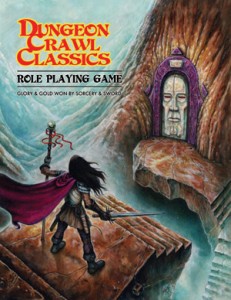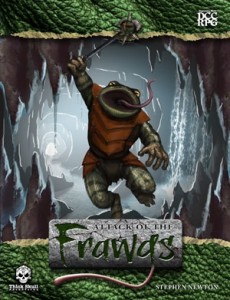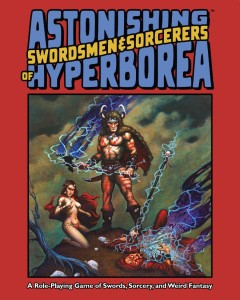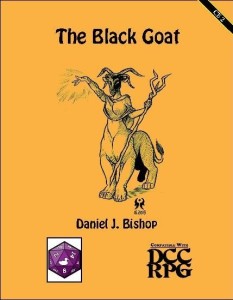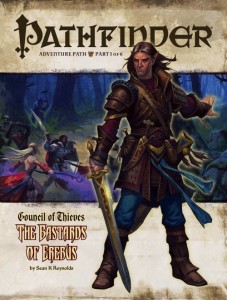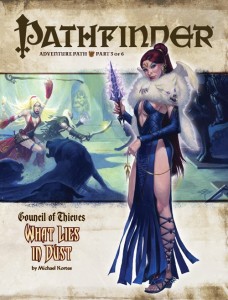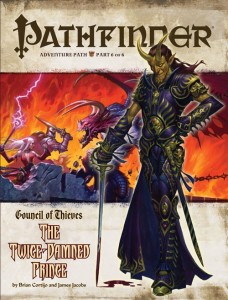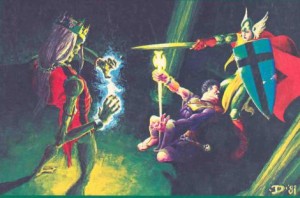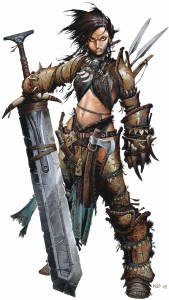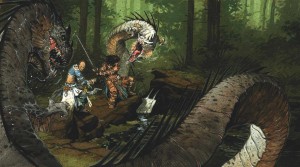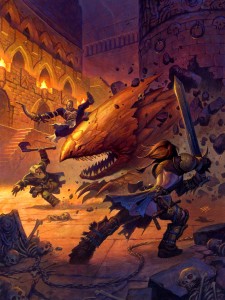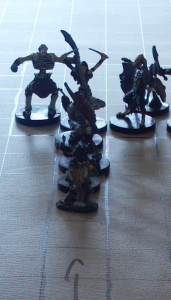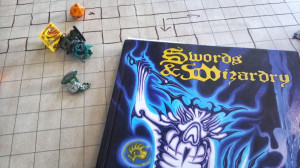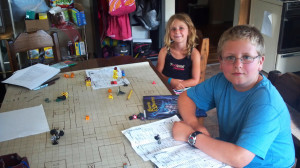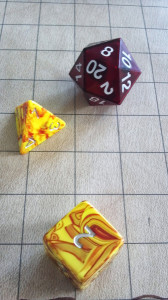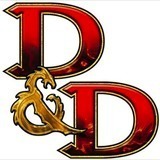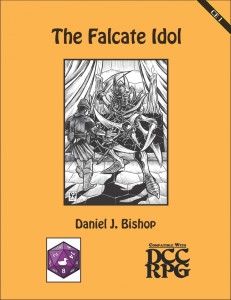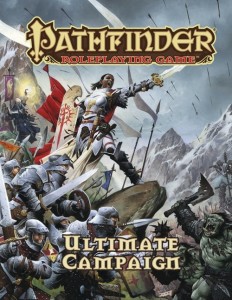 It is taking me a little time to get through my Ultimate Campaign sourcebook by Paizo for Pathfinder. It is not because it is a poor book, rather that real life keeps trying to get in my way. This morning I had a bit of a revelation anyway in that the sourcebook has four chapters with topics that take a quite different look at various parts of a campaign so I should do a review per chapter. In the final review I will bring it all together and give you my overall impressions of the book but this way I am able to give a bit more of an in depth look to each chapter as we go because they are quite meaty chapters.
It is taking me a little time to get through my Ultimate Campaign sourcebook by Paizo for Pathfinder. It is not because it is a poor book, rather that real life keeps trying to get in my way. This morning I had a bit of a revelation anyway in that the sourcebook has four chapters with topics that take a quite different look at various parts of a campaign so I should do a review per chapter. In the final review I will bring it all together and give you my overall impressions of the book but this way I am able to give a bit more of an in depth look to each chapter as we go because they are quite meaty chapters.
Chapter 1: Character Background
This chapter is largely what I was looking forward to this book for. Many of you will realise that I am a big role-player as opposed to the roll-player. I like to take on large roles, or fill my games with them so that the drama does not necessarily need to rely on combat to progress. To play a large character you need to think not only about their motivations but also where their motivations stem from. That is right, the background of the character. I have a discussion about getting into backgrounds on my own blog, which you can reach from this link.
Pathfinder has made attempts to get players involved in character background through Traits that first arose as a free web supplement and then also got included in the Advanced Players Guide (APG). Feats also could be attached to your character background as well if you so wished to do so. But in reality the background of your character has been largely left to your own to develop (which is not a bad thing) while the game focused on how to handle “the now”. As a GM I have always needed my players to use the Trait rules from the APG, taking a trait that they want and a campaign trait (to the adventure path or from the APG). This of course has led to an array of characters who all choose the Reactionary trait as their free choice and a varying campaign trait. Few of these characters ever bothered to tie these into a background of sorts.
Well, enter Chapter 1 of Ultimate Campaign (UCamp), which is in its entirety here to offer a mechanic to build your character’s background with sixty-eight pages of advice and support. As that is more pages combined of the sections that make up the Games Master section of the Core Book I think the people over at Paizo have looked at the trend of story based games that are rising in popularity and are beginning to provide some assistance on how to build well developed characters before the first game is even done.
Brainstorming
The chapter itself offers up a couple of different options to building your character. The first option is a structured brainstorming idea that helps you take on a character concept (with some really good ideas on what to do when stuck) that looks at the circumstances around your birth inclusive of family, the area, the characters social standing, exposure to magic and also a major event that is likely to be part of the formation of why the character took on a role like they did.
The brainstorm then moves you through adolescence including how you move from a child to an adult in your community, what friends, allies and influences affect you. It also asks you to think of a class event in that an event that led you to the training of your character’s actual class rather than social class, details of your first love as well as your duty and responsibilities. Then it leads into your adult life and the character you are now. It asks you to reflect on the past and how your character handles such things like their ordinary demeanor or conflict, what their vulnerabilities are, who their friends, associates and companions are. Once you have thought about this it then asks you to think about your trait choices and tying them into the background as a whole.
New Trait Mechanics and Drawbacks
The second option is a Background Generator which allows you to build a complete random background for the character. Before I discuss this I want to discuss the expanded traits that exist in this book and the new mechanics they have added to the character background. Traits have been greatly expanded in this new book. They have gone from an eight page section in the APG to a thirteen page inclusion (with all the traits from the APG included) in UCamp. The rules around traits are still that you may take two for your character. But now there is an addition to the rule where you can take three traits if you are willing to take on a drawback! New mechanic people! The drawback is something that limits your character in some way and they introduce some examples which are good but they are limited to two pages. I love this new idea as it becomes a source of conflict which adds drama to the game but only two pages of them? Come on! We want, nay need more Paizo. There are a world of flaws you can draw on and we get only a handful of good examples?
The Background Generator
The reason I covered the traits and flaws expansion before the random background mechanics is due to the fact that as you go through the Background Generator (BG) it ties results to possible traits that you should choose from so that the traits you choose are reflective of the events in your background. The BG is something that when I started reading I turned my nose up a little at it. I thought a character should come from within the player but the more I read the more I warmed to it. I thought of the characters that my players had run and how some of them had little to no background at all and thought this is a great way to show the importance of it. The BG is very old school in its approach. It is essentially a process of going to tables and rolling a percentile and finding the result. The tables go through three different stages (multiple tables in each stage.
 The first stage is the Homeland, Family and Childhood stage. It lays out tables explaining about your family, what life is like in your homeland and more. As you go through and role on these tables you open up access to certain traits that you may want to take in your allocation of traits. For example, if I rolled an 82% on the Circumstances of Birth table on page twenty I would gain access to the Blessed faith and Birthmark faith trait (there is a description to the roll but I won’t be offering spoilers). Now it is just gaining access to it which means at the end of the BG when all three sections are complete I will have a list of traits that fit my background and I will then go through them and choose up to two traits from the list or up to three if I am to take a drawback.
The first stage is the Homeland, Family and Childhood stage. It lays out tables explaining about your family, what life is like in your homeland and more. As you go through and role on these tables you open up access to certain traits that you may want to take in your allocation of traits. For example, if I rolled an 82% on the Circumstances of Birth table on page twenty I would gain access to the Blessed faith and Birthmark faith trait (there is a description to the roll but I won’t be offering spoilers). Now it is just gaining access to it which means at the end of the BG when all three sections are complete I will have a list of traits that fit my background and I will then go through them and choose up to two traits from the list or up to three if I am to take a drawback.
The second stage covers the character’s adolescence and training into their class while the third and final stage looks at moral conflicts, relationships and vulnerabilities. The third stage even has an alignment generator tied to the background of the character! How cool is that? Fancy your alignment being a product of your background!
Story Feats
The final thing that I want to say about this chapter is the final new mechanic in it called the Story Feat. These are fantastic! They can be tied into character background I believe at points during the BG as a suggested feat for the character. They in essence offer you a personal quest, which gives you added abilities (like a normal feat) while you are pursuing the quest and then, once complete, these abilities tend to become more powerful. These Feats can be taken by anyone that meets at least one of the eligibility criteria at the start of it, which means they are easily adaptable to existing campaigns. The Feats themselves offer a GM automatic secondary stories or plot lines to be incorporated into your game adding a beautiful depth to the story that will be pursued by the player! Get into these feats GM’s and players alike. if you sit around in game wondering what is going on, these feats will give you motivation to stay focused and find areas that can help you complete the feat. There are a healthy eight pages devoted to these feats.
Chapter 1 Likes and Dislikes
This sourcebook is shaping up to be a fantastic sourcebook for the Pathfinder game. It is working mechanics to give an in depth story. Chapter 1 on a flick through looks to be all rules and regulations for the game and may be a bit off putting to a player. But the essence of all these rules is to bring an enhanced, in depth understanding to the character and why they act like they do. The rules do not need to be memorized and are easily skimmed through as you make your character.
The thing I am most excited about is the Story Feat, which are just a brilliant idea. They add an in game reason for focus and plot development that the player has an increasing buy in to. I can see me developing may more of them for use in my game and I do hope Paizo has planned other story feats that might be linked to adventure paths or the like. The BG also looks to be a fun way to build a character background. If I ever have the opportunity to be a player in another Pathfinder game I am going to go all in with a completely random background for a challenge to roleplay the end result. It is a very old school way to achieve a background but I think it is going to be fun to see the variations from it.
The only criticism I have of this chapter are the poor amount of drawbacks. The ones there are okay but in one lot of characters you are likely to use most of them up. Drama comes from vulnerabilities and foibles and for this mechanic to be truly embraced we need a lot more drawbacks that can be used. Before I run my next game I am actually going to have to spend a good deal of time fleshing these out as my group will get any advantage they can (three traits, one drawback is better than two traits).
There are some of you out there that have probably read this sourcebook three times over by now but I hope that some of you will read some of these reviews and make your decision on if you should include it in your rules set. I am enjoying savoring the book as I read through it and I will bring a review of the next chapter to you next Monday. Until then, keep rolling!
Mark Knights is 39 year old guy living in a small rural town called Elliott in Tasmania, Australia. I have been role playing since I was 11 years old playing the original versions of Dungeons and Dragons, MERP, Elric, Dragon Warriors and the like amongst other genre games. I played D&D 2nd Edition through the 90′s but I ran Earthdawn for my fantasy setting and loved it as a GM. When 3rd Edition came out for D&D I tried it but found it too heavy on rules. I ignored the 3.5 edition of DnD in favour of Earthdawn (big mistake) as I thought it was just a money spinner. When 4th Edition DnD came on my players and I gave it a red hot go but hated what it had dumbed the game down to be. On a trip to Melbourne to buy some 4E stuff from a hobby store an old mate of mine pointed me at Pathfinder and in a Fantasy setting I have never looked back.

